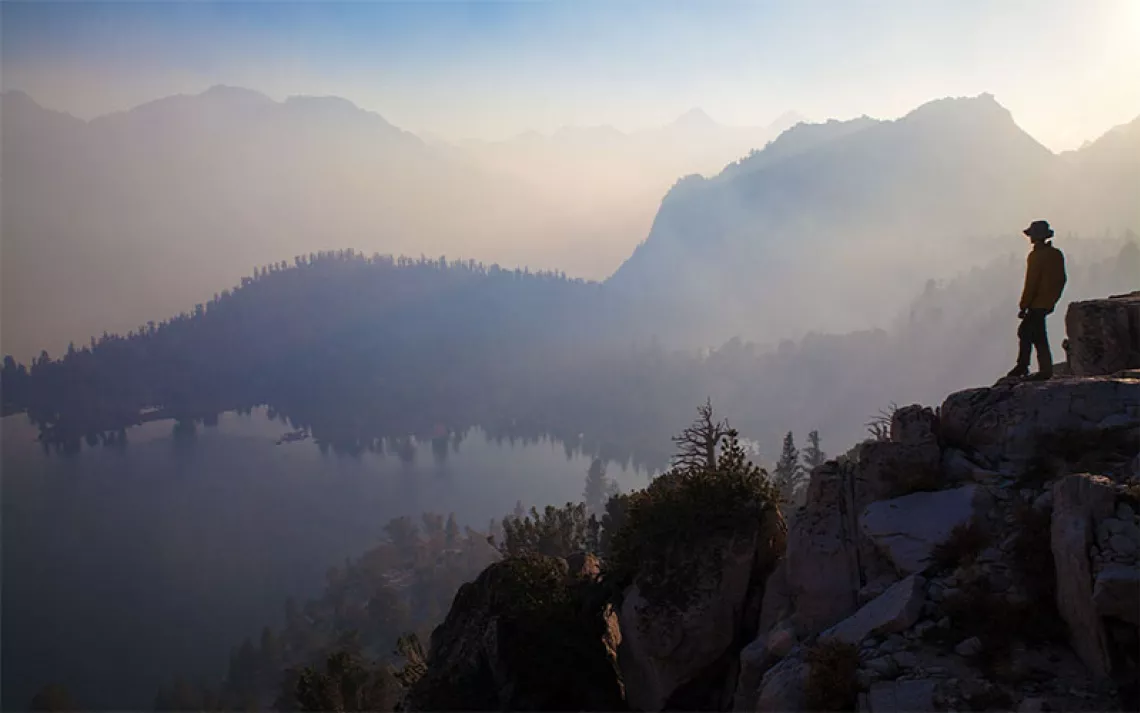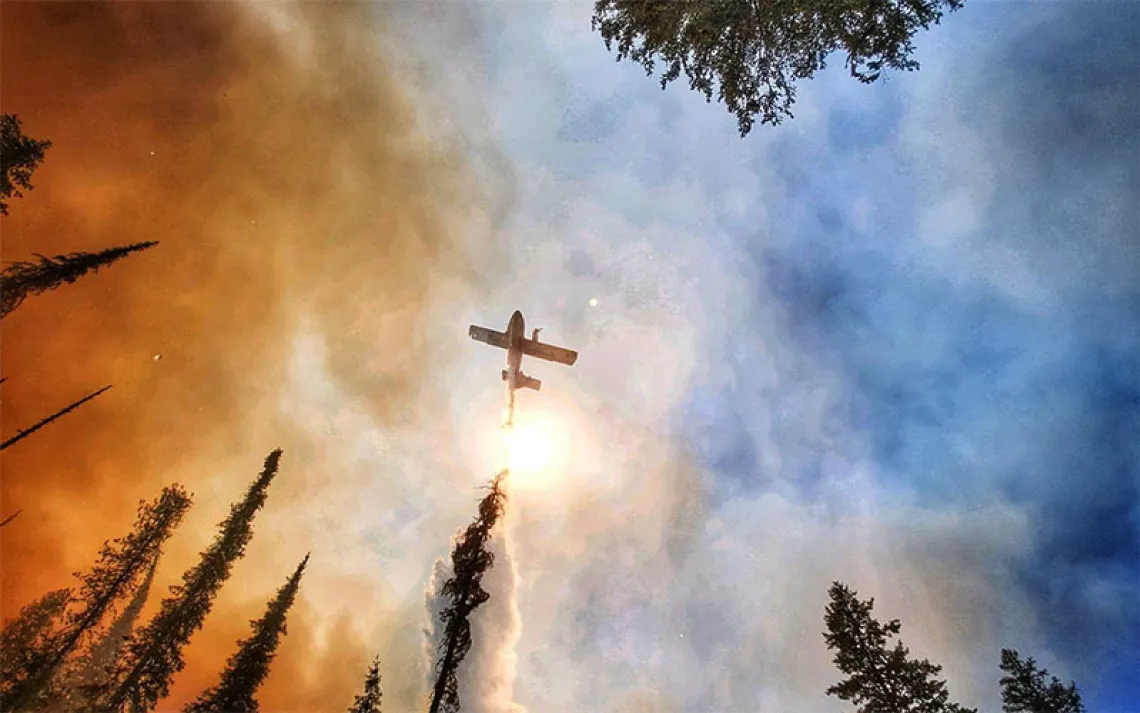Nature's Noise Complaint
Nearly two-thirds of protected U.S. lands are polluted by noisy humans

Cathedral Grove, part of Northern California's Muir Woods National Monument, has been designated a quiet refuge. Ever since, its noise pollution has decreased by three decibels. | Photo courtesy of Kirke Wrench/National Park Service
Noise pollution is typically considered an urban problem. However, new research shows that the invisible threat found in the din of human activity (also known as anthropogenic sound) is increasingly taking its toll on the natural world.
A first-of-its-kind study, released last Thursday from scientists at Colorado State University and the National Park Service, shows that anthropogenic noise pollutes 63 percent of all U.S. protected lands—that includes city and county parks, state and national forests, and national parks, monuments, and refuges. After culling more than a million hours of recorded data from 492 protected sites across the continental United States, researchers concluded that anthropogenic noise doubled background sound levels in most of these areas. They also detected elevated sounds in 14 percent of endangered species’ critical habits. Protected areas with the most stringent regulations, such as national parks and designated wilderness areas, suffered the least noise pollution.
The issue does more than disrupt the natural serenity of protected places like parks, forests, and historical battlefields. According to George Wittemyer, a Colorado State University conservation biologist and one of the authors of the study, the impact of excessive noise—which has been steadily mounting since the Industrial Revolution—includes increased heart rate in humans, as well as disrupted sleep, irritability, negative cardiovascular and psychophysiological effects, and even shortened life spans. He’s not the only one to say so. The World Health Organization considers noise pollution to be an environmental burden second in scope only to air pollution.
In the wild, noise affects the ability of prey to detect predators, masks wildlife communication, and interferes with species’ ability to pick up on signals from other species. This, for instance, confuses bird mating behavior, which depends on the efficacy of males’ songs.
“Many species will avoid areas with too much noise,” Wittemyer says. “It can actually re-structure ecosystems.” Even plant life suffers from manmade racket. “Noise might keep seed dispersers or pollinators away, which over time changes the composition of the plant community.” The most common culprits are cars, aircraft, and forms of extractive land use including mining, logging, and drilling.
Previous to this study, sound had been only quantified at the site level. It was only when the NPS Natural Sounds and Night Skies Division teamed up with Colorado State’s Sound and Light Ecology Team that researchers devised a uniform algorithm to predict anthropogenic noise levels on a broad scale.
The idea was to identify those places that stand to benefit from noise mitigation efforts and to prioritize the protection of those quiet places where one can still escape the clamor of everyday life. While this study marked the first time sound data was quantified on a continental scale, Wittemyer notes that the issue can’t be resolved with continental-scale policy. “There are different implications for different protected areas; it’s got to be solved at a local management level,” he says. “Citizen action and public involvement is key. People should do exactly what they would if they saw someone dumping garbage in a river—take it up with park rangers, politicians, and regulating bodies.”
NPS acoustic biologist Megan McKenna, another study author, says this new data will provide managers of protected areas such as national parks with information to enhance recreation and visitor use planning. It will also benefit the NPS Quiet Parks program, which aims to provide national park units with resources for reducing park-generated noise sources—abating noise from HVAC systems, maintenance trucks, PA systems, lawnmowers, vehicle fleets, etc. “It’s about helping parks to understand their unique acoustic environments and those sound sources present,” says McKenna, who hopes the data will bolster conversations about ways to reduce noise, and about what sounds are appropriate.
While McKenna is excited about the early-stage development of promising technology including quiet electric aircrafts, she says there are several simple and inexpensive ways to cut down on noise pollution. She points to Northern California’s Muir Woods, which designated a “quiet zone,” demarcated by signs asking visitors to lower their voices and turn off their music. The signs alone reduced sounds by almost three decibels. Washington, D.C.’s Rock Creek Park recently reduced its sonic footprint, too, albeit inadvertently. “They started closing the main road on weekends,” McKenna says. “The intent wasn’t noise reduction, but that’s been the added benefit—and it helped scientists understand how local bird communication is affected by traffic. A lot of times, it’s just the little things.”
While Wittemyer and McKenna are concerned about noise pollution’s prevalence across landscapes, both were surprised by the converse—to learn that a third of protected areas across the country enjoy undisturbed natural soundscapes. “There are still so many opportunities for the public to immerse themselves and really listen, so as to appreciate a soundscape just like they would a beautiful vista,” says Wittemyer. “Once we get people to recognize the value and benefits of these natural soundscapes, I think we’ll do a better job of protecting them.”
McKenna echoes that sentiment. “Just like dark skies, pristine soundscapes are pretty incredible,” she says. “The more you learn about the sounds of a place that’s special to you, the more likely you are to turn your cell off and really tune in. And, the more likely you are to really listen when you travel to new places.”
 The Magazine of The Sierra Club
The Magazine of The Sierra Club



